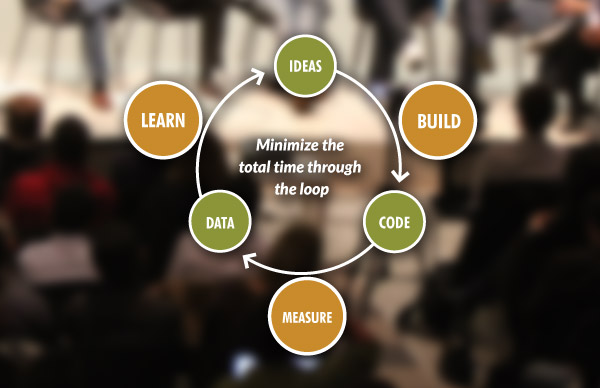The Lean Startup
September 24, 2023
There is surely nothing quite so useless as doing with great efficiency what should not be done at all ~ Peter Drucker
-
Startup is a human institution designed to create new products and services under conditions of extreme uncertainty.
-
Startup success is not a consequence of good genes or being in the right place at the right time. Startup success can be engineered by following the right process.
-
The goal of a startup is to figure out the right thing to build – the thing customers want and will pay for – as quickly as possible.
-
The lean startup takes it's name from the leaning manufacturing revolution that Taiichi Ohno and Shigeo Shingo are credited with developing at Tayota.
-
The lean startup methodology is based on the customer development methodology.
-
Lean startup is a methodology for developing businesses and products that aims to shorten product development cycles and rapidly discover if a proposed business model is viable; this is achieved by adopting a combination of business hypothesis driven experimentation, iterative product releases and validated learning.
-
Learn startup emphasizes customer feedback over intuition and flexibility over planning
-
Every startup in any industry is a grand experiment. The question is not "Can this product we built ?". Instead "Should this product be built ?"
The 2 Most Important Assumption Entrepreneurs Make
Value hypothesis: Does a product or service really deliver value to customers once they are using it? Design experiments that prove this by their actions. Don’t use surveys.
Growth hypothesis: How will new customers discover a product or service?
4 Questions For Product Development (In Order)
- Do consumers recognize that they have the problem you are trying to solve?
- If there was a solution, would they buy it?
- Would they buy it from us?
- Can we build a solution for that problem?
Build Measure Learn

Build
- Minimum Viable Product
Version of a new product which allows a team to cllect the maximum amount of validated learning about the customer with least effort.
First products aren’t meant to be perfect. Early adopters are suspicious of something that’s too polished.
Additional features beyond what early adopters demand is a form of wasted resources and time. The complexity of an MVP depends on the idea and industry. It could be as simple as an ad, or a complex working prototype. It just depends on what assumption you need to test.
If we do not know who the customer is, we do not know what quality is.
Always ask: what if they don’t care about the design in the same way we do?
We must be willing to set aside our traditional professional standards to start the process of validated learning as soon as possible.
As you build an MVP, remove any feature, process, or effort that does not contribute directly to the learning you seek.
The only way to win is to learn faster than anyone else.
- Continuous deployment
All the code written for an application is immediately deployed in production.
When you have only one test, you don’t have entrepreneurs, you have politicians, because you have to sell. Out of a hundred good ideas, you’ve got to sell your idea. So you build up a society of politicians and salespeople. When you have five hundred tests you’re running, then everybody’s ideas can run. And then you create entrepreneurs who run and learn and can retest and relearn as opposed to a society of politicians.
Measure
Are you making your product better? How do you know?
A good design is one that changes customer behavior for the better.
You need a clear baseline metric, a hypothesis about what will improve that metric, and a set of experiments designed to test that hypothesis.
A startup has to measure progress against a high bar: evidence that a sustainable business can be built around its products or services.
- Split testing (A/B testing)
Different versions of the product offered to the customers at the same time. Should be done parallel testing.
The 3 A’s of Metrics
Actionable: Clear cause and effect between experiment and metric. Accessible: Make the reports as simple as possible so everyone understands them. Auditable: You must be able to test the data by hand.
Pivot
Structured course correction designed to test a new fundamental hypothesis about the product, strategy and engine of growth.
When an entrepreneur has an unclear hypothesis, it’s almost impossible to experience complete failure, and without that failure, there is usually no impetus to embark on the radical change a pivot requires.
Optimizing, tuning, and iterating all serve one purpose: Testing a clear hypothesis in the service of the company’s vision.
A pivot is best understood as a new strategic hypothesis that will require a new minimum viable product to test.
Learn
Small batches
Small batches permit us to deliver results faster, with higher quality and less stress.
-
Small batches = faster learning.
-
The ability to learn faster from customers is the essential competitive advantage that startups must possess.
-
It is not the customer, but rather our hypothesis about the customer, that pulls work from product development and other functions.
Five Whys
The primary goal of the technique is to determine the root cause of a defect or problem by repeating the question "Why?" five times.
-
Most mistakes are caused by flawed systems, not bad people.
-
Whenever something goes wrong, ask yourself: How could I prevent myself from being in this situation ever again?
References
- https://youtu.be/F5vtCRFRAK0?si=rKRctWA0S-cf-89T
- https://youtu.be/0wVAPXswE6E?si=IO42aZou9i_3v4ol
- https://www.kimhartman.se/wp-content/uploads/2013/10/the-lean-startup-summary.pdf -https://en.wikipedia.org/wiki/The_Toyota_Way
Similar Books
- Rework
- Zero to One
- The Tayota Way